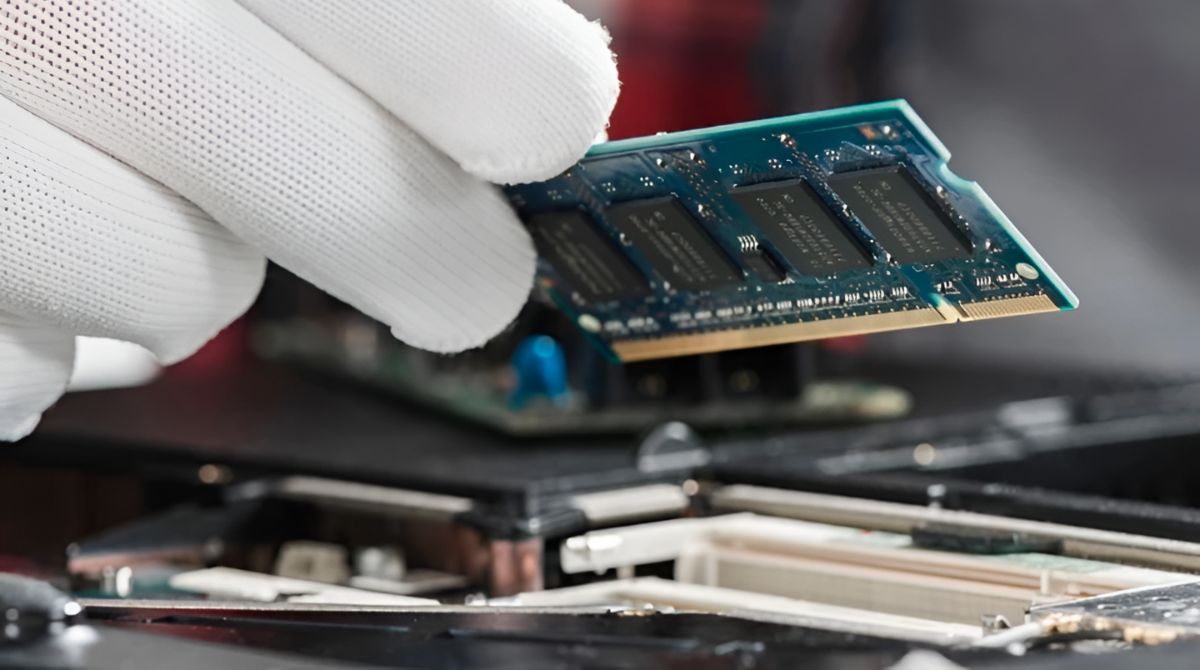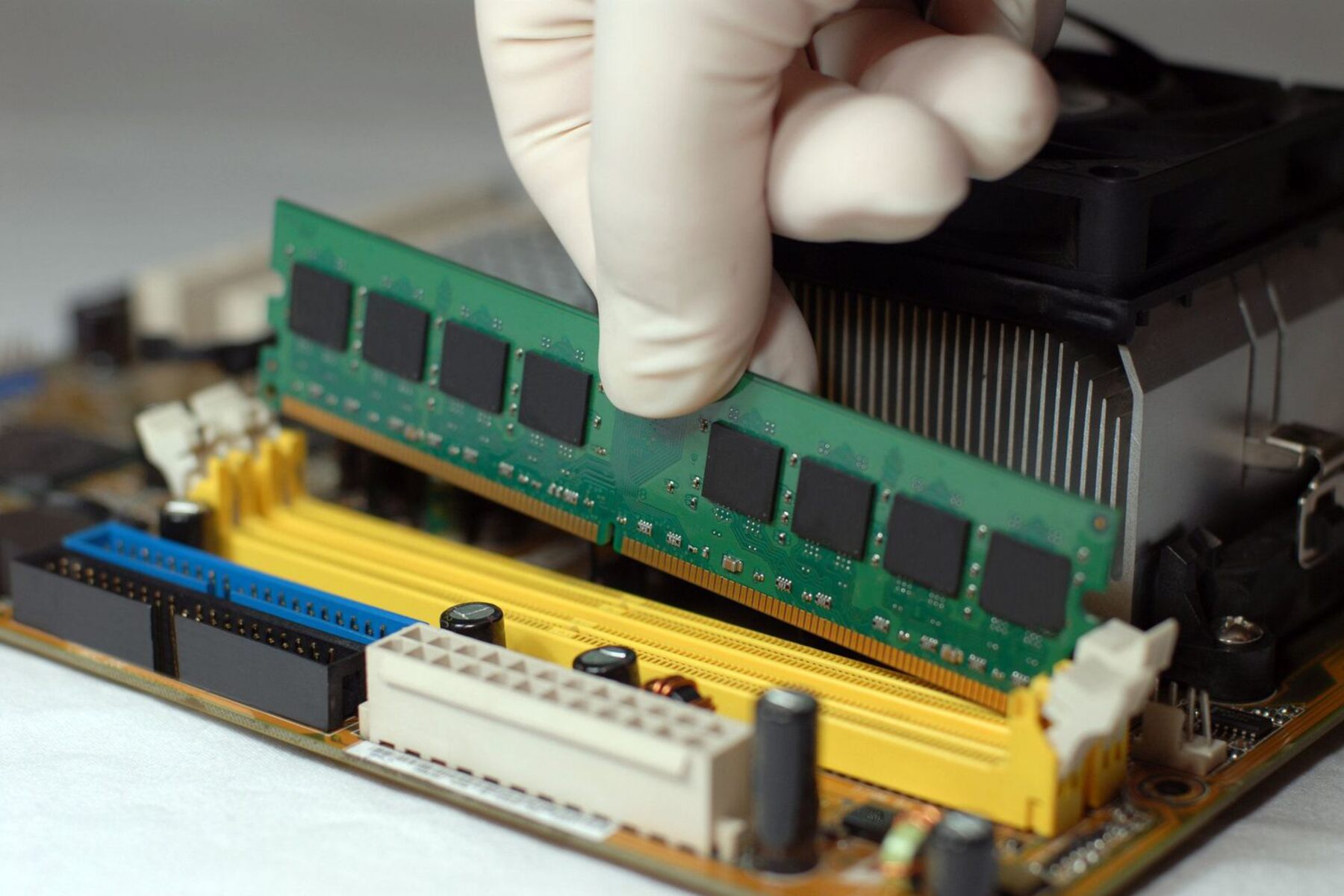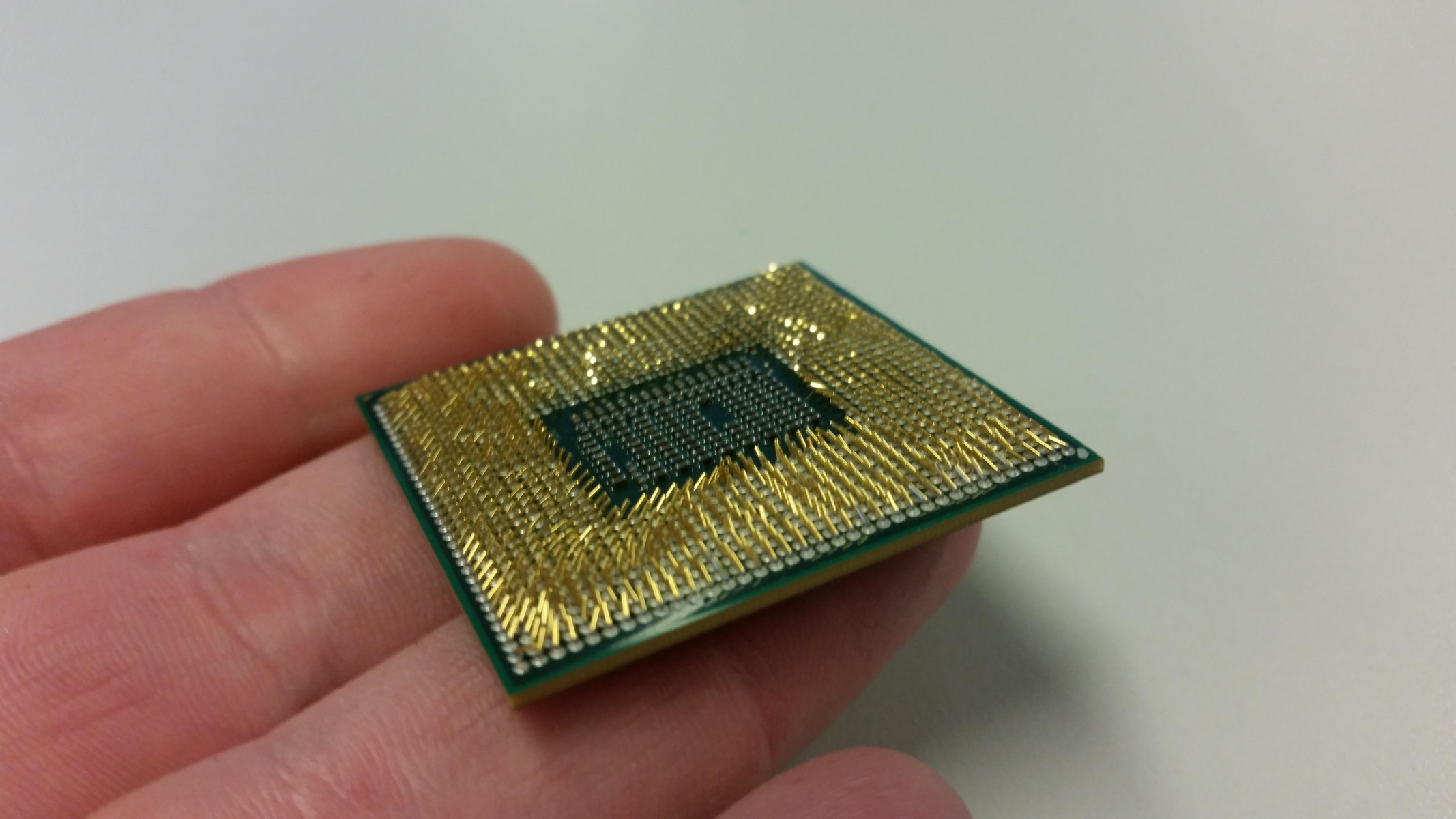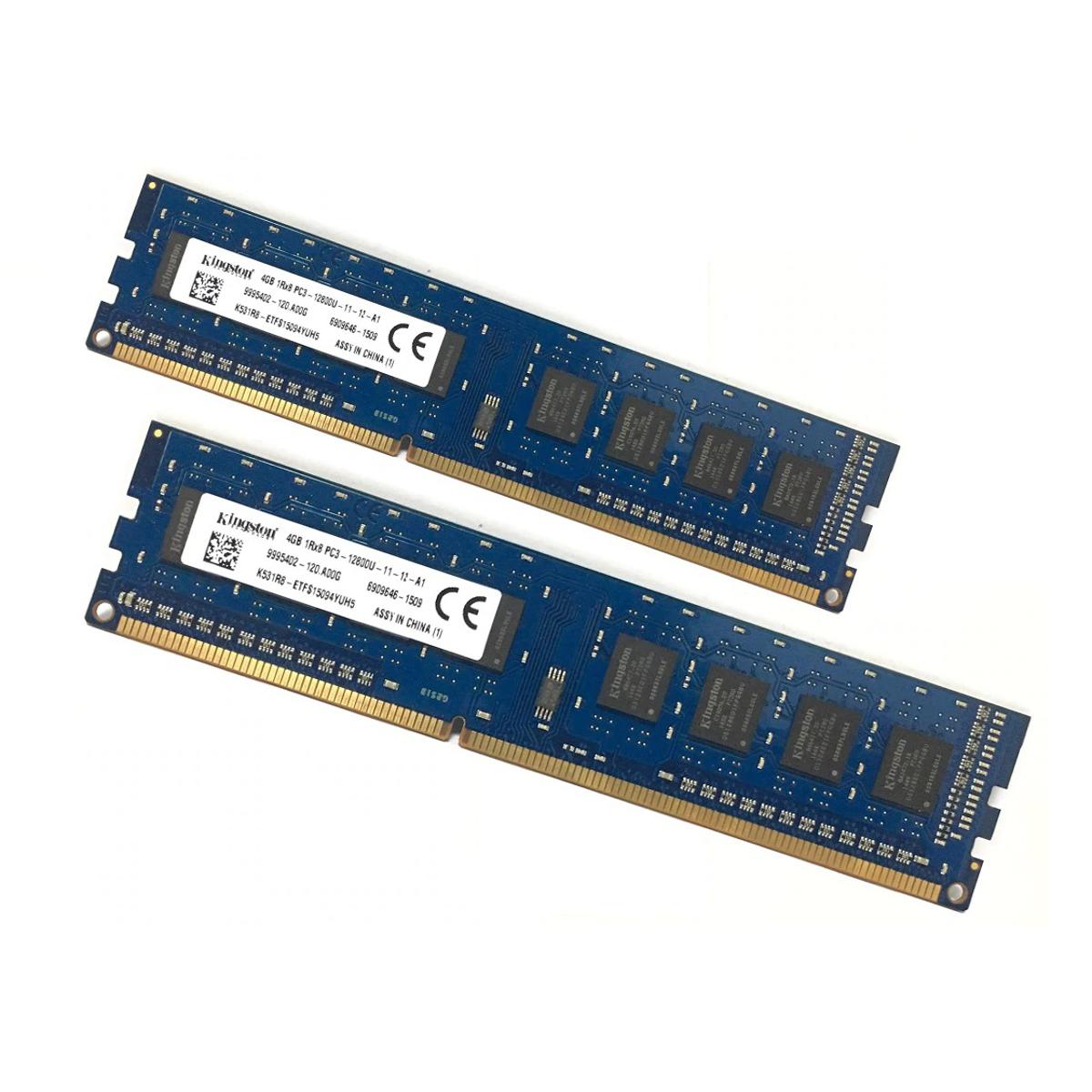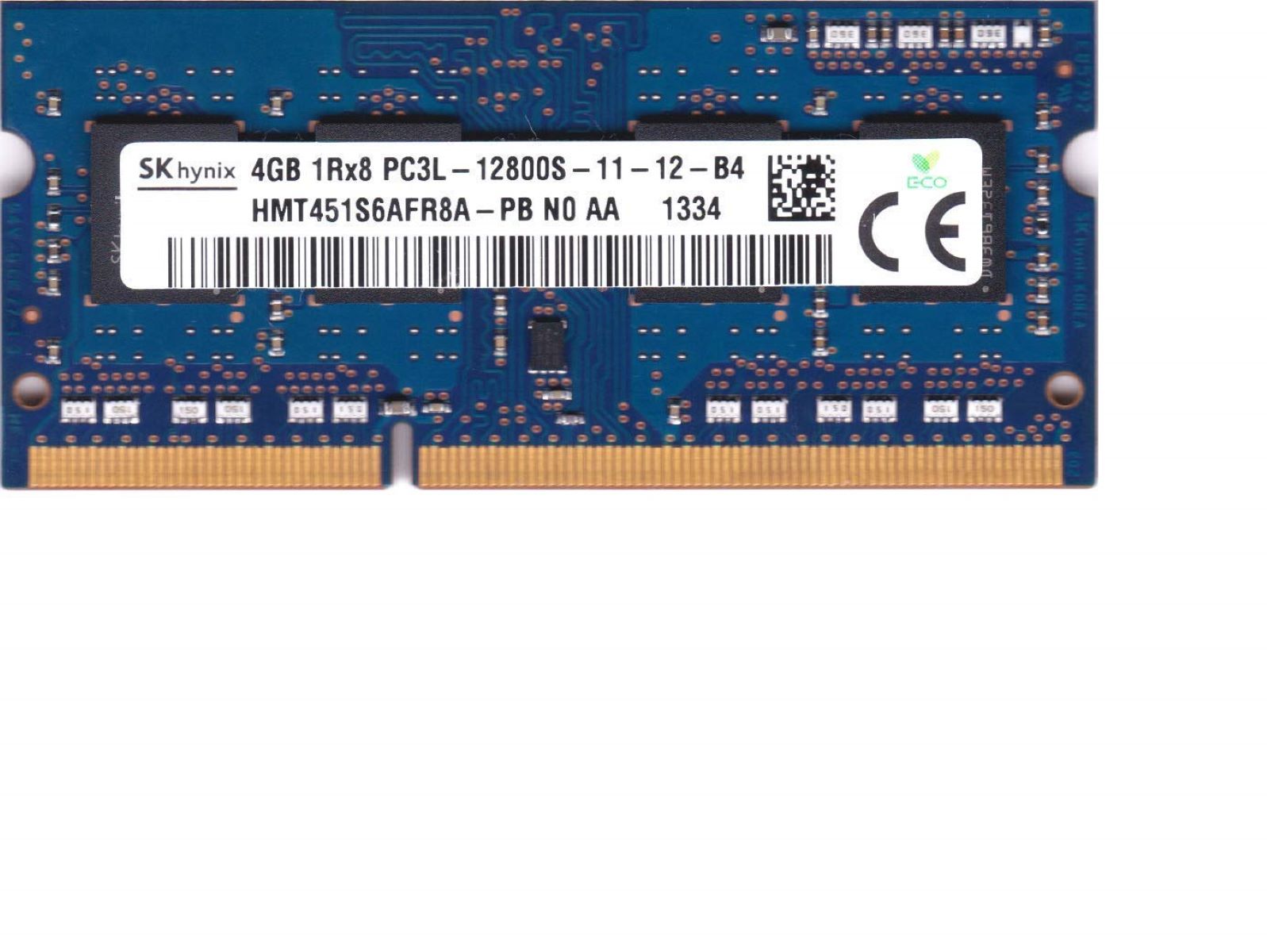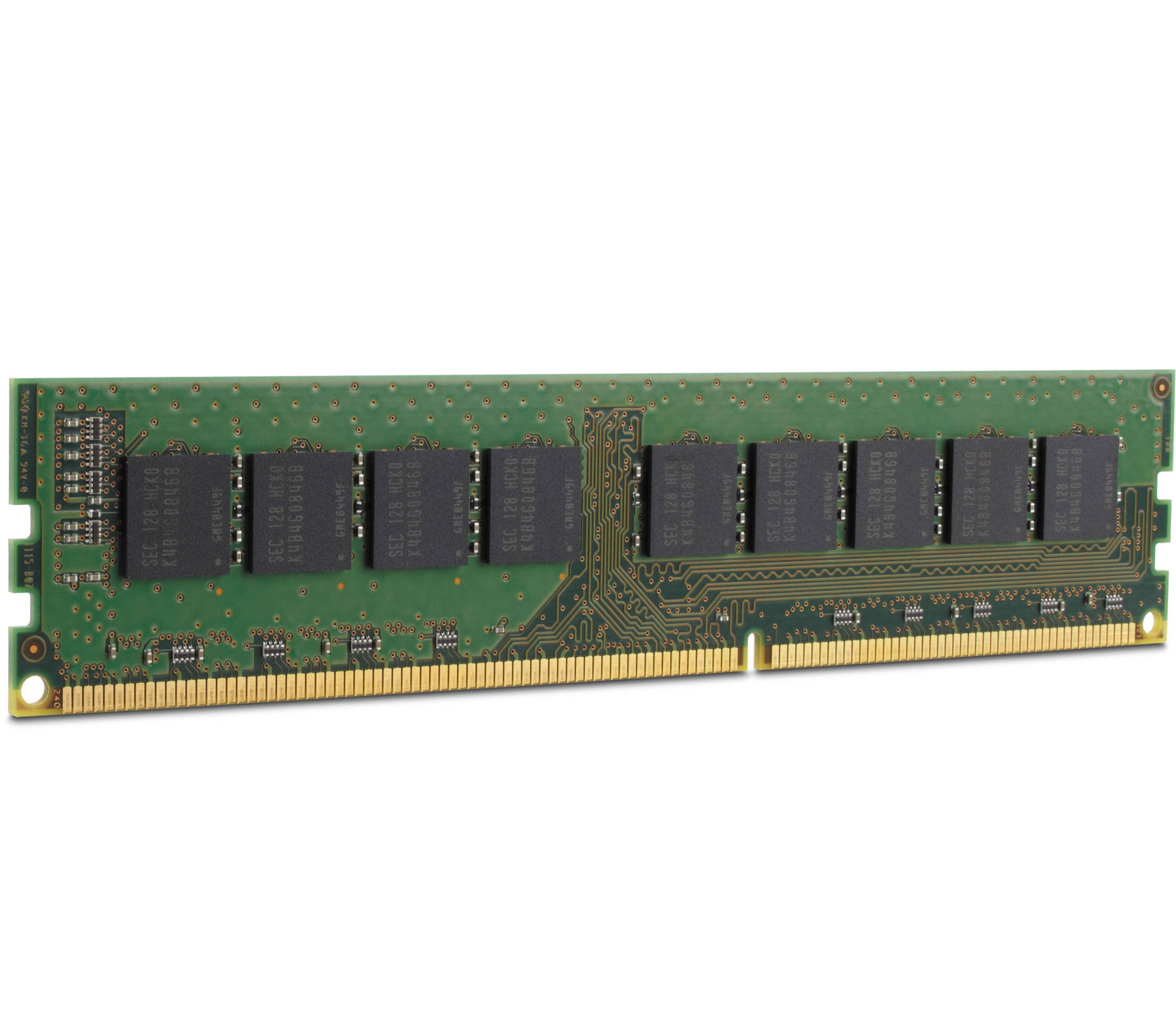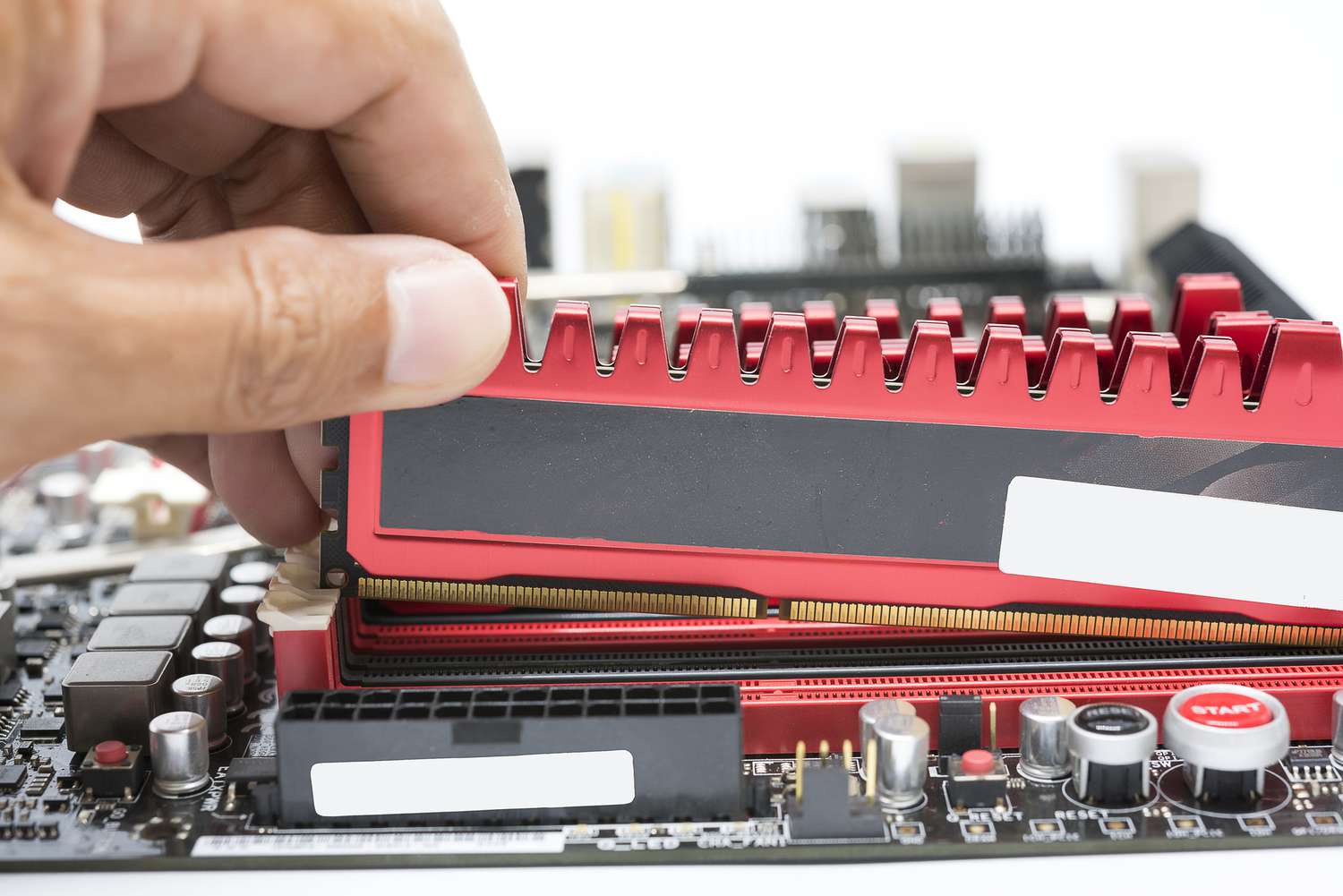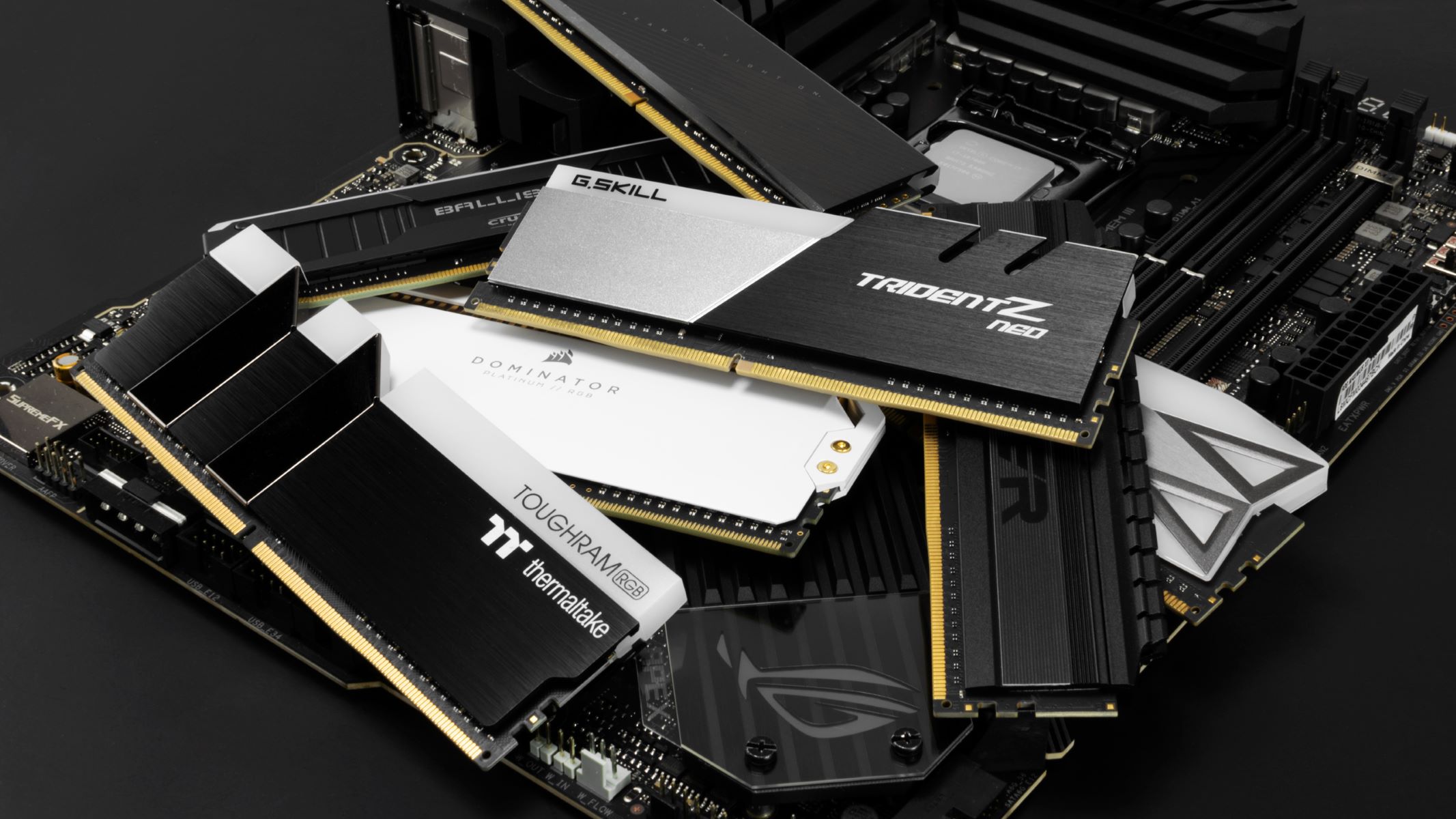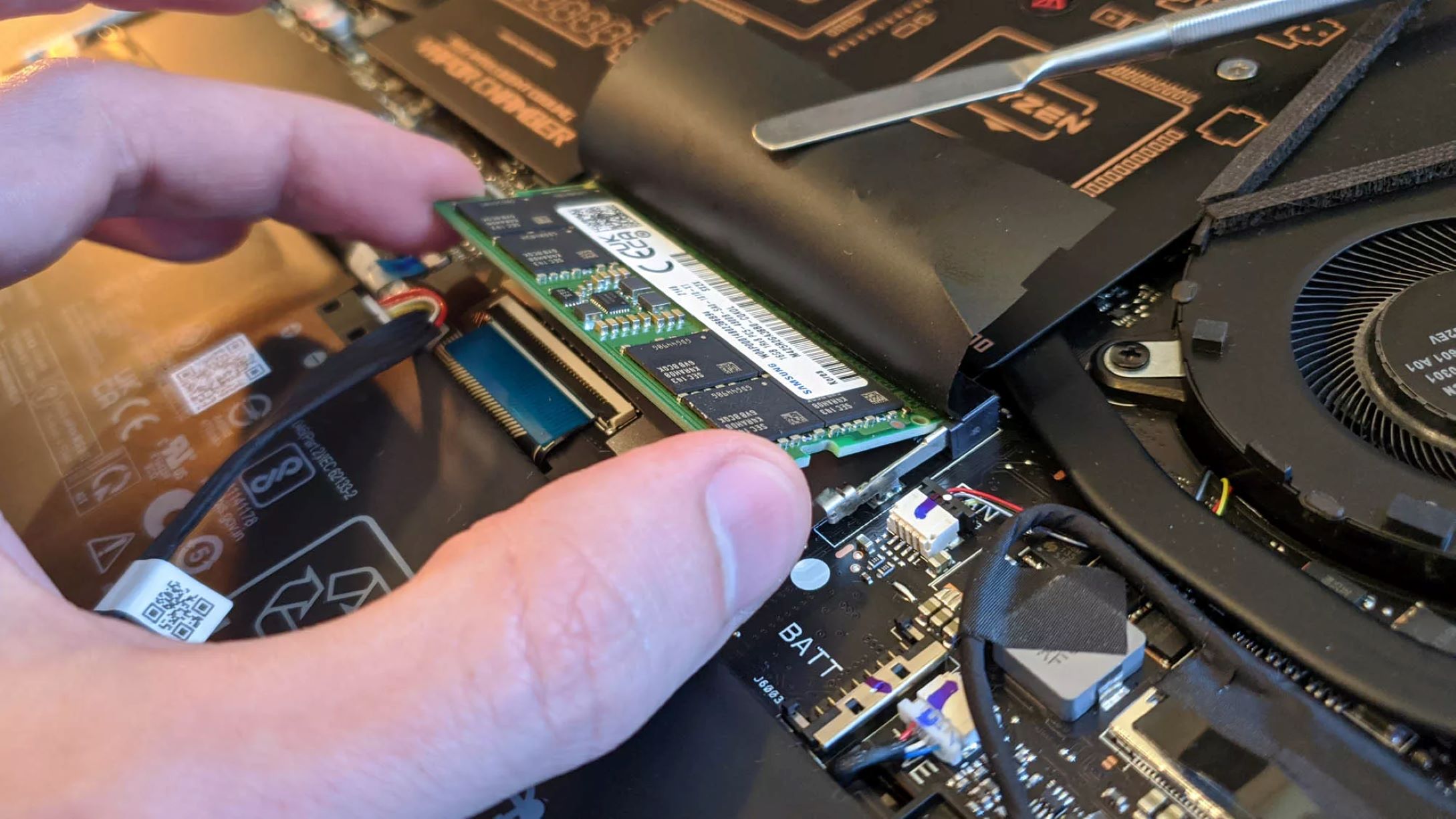Introduction
When it comes to upgrading your computer’s memory, knowing the number of pins your RAM has is crucial. RAM stands for Random Access Memory, and it is the component responsible for storing data that your computer needs to access quickly. Upgrading RAM can significantly improve your computer’s performance, allowing for smoother multitasking and faster data processing. However, not all RAM modules are created equal, and different computers require specific types of RAM.
Understanding how many pins your RAM has is essential because it determines the physical compatibility between the RAM module and your computer’s motherboard. RAM modules come in various pin configurations, such as 204-pin, 260-pin, and 288-pin. If you install a RAM module with the wrong number of pins, it won’t fit into the memory slot, making it impossible to upgrade your computer’s memory.
In this article, we will explore different methods to determine the number of pins your RAM has. Whether you’re a casual computer user or a tech enthusiast, having this knowledge will empower you to make informed decisions about upgrading your computer’s memory.
What is RAM?
RAM, or Random Access Memory, is a vital component in any computer system. It is a type of temporary storage where the CPU (Central Processing Unit) can quickly access data that is actively being used by the computer. Unlike long-term storage devices such as hard drives or solid-state drives, RAM is volatile, meaning it does not retain data once the computer is powered off.
RAM acts as a buffer between the CPU and the storage devices, allowing for fast data retrieval and manipulation. Whenever you open an application, launch a program, or perform any task on your computer, the necessary data is loaded into the RAM for quick access. The more RAM you have, the more data your computer can hold in memory, which ultimately leads to improved performance.
RAM plays a critical role in multitasking. When you have multiple applications open simultaneously, each application requires a certain amount of RAM to run efficiently. If you have insufficient RAM, your computer may slow down as it struggles to juggle all the tasks. This can result in laggy performance, frequent freezes, or even crashes.
The capacity of RAM is typically measured in gigabytes (GB). Common configurations include 4GB, 8GB, 16GB, and 32GB, with higher capacities available for specialized applications. It is important to note that the more RAM you have, the better your computer will handle resource-intensive tasks, such as video editing, gaming, or running virtual machines.
RAM modules come in different form factors, including DIMM (Dual In-Line Memory Module) for desktop computers and SODIMM (Small Outline Dual In-Line Memory Module) for laptops. Each module has a specific pin configuration, which is a determining factor in whether it is compatible with your computer’s motherboard.
Now that we have a clear understanding of what RAM is and its importance let’s dive into how you can determine the number of pins your RAM has to ensure compatibility with your computer.
Why do I need to know how many pins my RAM has?
Knowing the number of pins your RAM has is crucial for several reasons. Here are a few important ones:
1. Compatibility: Different computer systems require specific types of RAM modules. The number of pins in your RAM determines its physical compatibility with your computer’s motherboard. If you try to install a RAM module with the wrong pin configuration, it simply won’t fit into the memory slot. Knowing the correct number of pins ensures that you choose compatible RAM for your system.
2. Performance: Installing the right RAM module with the correct pin configuration can optimize your computer’s performance. The speed and efficiency of data transfer between the RAM and the CPU depend on the compatibility and configuration of the RAM module. Using RAM with an incorrect pin count can affect the performance of your computer and lead to slower processing speeds.
3. Upgradability: Understanding the pin count of your RAM helps you plan for potential future upgrades. When you know the current pin configuration of your RAM, you can easily determine if there are available slots for additional RAM modules. This knowledge allows you to expand your computer’s memory capacity and improve its performance in the future.
4. Cost-effective upgrades: Being aware of the number of pins your RAM has can help you make cost-effective upgrade decisions. Instead of purchasing a new RAM module that may not be compatible, knowing the pin count allows you to search for the right type of RAM, avoiding unnecessary expenses and potential compatibility issues.
5. Time-saving troubleshooting: In the event of RAM-related issues, knowing the pin configuration can be helpful for troubleshooting purposes. If you experience performance problems or system crashes, determining the correct pin count of your RAM can aid in identifying potential incompatibilities or faults in the memory modules.
By understanding the significance of knowing how many pins your RAM has, you can ensure compatibility, optimize performance, plan for upgrades, make cost-effective decisions, and troubleshoot any issues effectively.
Checking the physical RAM
One of the simplest ways to determine the number of pins your RAM has is by physically inspecting the RAM module itself. Here’s how you can do it:
1. Power off your computer: Before handling any internal components, ensure that your computer is completely powered off and unplugged from the power source. This step is essential for your safety.
2. Open your computer’s case: Depending on your computer model, you may need to unscrew and remove a side panel or access a compartment specifically designed for the RAM modules. Consult your computer’s manual or search online for instructions on how to open your computer’s case.
3. Locate the RAM modules: Once the case is open, locate the RAM modules on the motherboard. They are usually rectangular-shaped and have small chips mounted on them. Note the position of the modules and remember to handle them with care, avoiding physical damage from static electricity or mishandling.
4. Remove one RAM module: Gently press the clips or levers on the sides of the RAM module to release it from the slot. Slowly and evenly pull the module out of the slot. Be cautious not to apply excessive force or bend the pins on the module.
5. Examine the pins: With the RAM module in hand, take a close look at the pins on the bottom edge of the module. Count the number of pins carefully. Most RAM modules have pins on a single edge, but some may have pins on both sides.
6. Repeat for each RAM module: If you have multiple RAM modules, repeat the process of removing and examining the pins for each module to ensure accuracy.
Once you have determined the number of pins for each RAM module, you can record the information and continue with the necessary steps to upgrade or troubleshoot your computer’s memory.
Remember to handle the hardware components with care and consult professional assistance if you are unsure or uncomfortable performing these steps on your own.
Checking the spec sheet
If you prefer to avoid physically removing the RAM modules from your computer, you can check the spec sheet or documentation that came with your computer. Here’s how you can do it:
1. Find the computer’s documentation: Locating the spec sheet or user manual that came with your computer is the first step. This documentation usually contains detailed information about your computer’s hardware components, including the RAM specifications.
2. Look for the RAM section: Once you have the documentation in hand, look for the section that provides details about the RAM. It might be titled “Memory Specifications” or something similar. This section may include information about the RAM capacity, type, speed, and pin count.
3. Note the RAM specifications: In the RAM section of the spec sheet, locate the information related to the pin count. It may be listed as the number of pins or simply as “pin configuration.” Take note of this information, as it will indicate the correct number of pins for your RAM module.
4. Cross-reference with actual RAM: If you have access to your computer’s internals, you can cross-reference the information obtained from the spec sheet with the physical RAM modules. Compare the details mentioned in the documentation with what you observe on the modules themselves to ensure accuracy.
5. Document the information: Once you have verified the pin count, make sure to document this information for future reference. It can be helpful when purchasing additional RAM modules or troubleshooting any potential issues.
If you cannot locate the original documentation for your computer, you can often find the spec sheet or user manual on the manufacturer’s website. Look for the support section or search for your computer model to access the necessary documentation.
By checking the spec sheet or user manual, you can determine the pin count of your RAM without having to physically inspect or remove the modules from your computer.
Using system information tools
If you prefer a digital approach to determine the number of pins your RAM has, you can use system information tools that provide detailed hardware specifications. Here’s how you can use these tools:
1. Windows System Information: Windows operating systems have a built-in tool called “System Information” that provides comprehensive details about your computer’s hardware and software configuration. To access it, press the Windows key + R, type “msinfo32” in the Run dialog box, and press Enter. In the System Information window, navigate to the “Memory” or “RAM” section, where you can find information about the installed RAM, including the pin count.
2. Mac System Information: For macOS users, you can utilize the “System Information” tool to gather hardware details. To access it, click on the Apple menu, select “About This Mac,” and then click on the “System Report” button. In the System Information window, go to the “Memory” tab, where you can find details about the RAM, including the pin count.
3. Third-party system information tools: There are numerous third-party system information tools available, such as CPU-Z and Speccy. These tools provide comprehensive hardware information, including details about your computer’s RAM. Simply download and open the tool, navigate to the memory section, and look for the pin count information. Consult the tool’s documentation or online resources for specific instructions on how to find RAM details.
4. Mobile device system information: If you are using a mobile device, such as a smartphone or tablet, you can often find system information tools in the settings menu. Navigate to the “About” or “System” section of your device’s settings, and look for details about the RAM. Unfortunately, not all mobile devices provide precise information about the pin count of the RAM, but you can usually find the total RAM capacity.
Using system information tools to discover the number of pins your RAM has is an easy and convenient method. It eliminates the need to physically inspect your computer’s components and allows you to gather accurate information about your RAM configuration digitally.
Consulting the manufacturer’s website
If you want to ensure the most accurate and up-to-date information about your computer’s RAM, consulting the manufacturer’s website is an excellent option. Here’s how you can use this method:
1. Identify your computer’s model: Determine the specific model of your computer or laptop. This information is usually located on the computer’s body or can be found in the original packaging, product documentation, or system settings.
2. Visit the manufacturer’s website: Once you have your computer’s model, visit the manufacturer’s official website. Look for a support or product page where you can access detailed information about your computer’s specifications.
3. Locate the support section: On the manufacturer’s website, navigate to the support section or search for your computer’s model number. This section should provide access to the necessary documentation, including spec sheets, user manuals, or technical specifications.
4. Find information about RAM: In the documentation or specifications, locate the section that provides details about the RAM. Look for information about the RAM capacity, type, speed, and most importantly, the pin count. The pin count will determine the compatibility of your computer’s RAM modules.
5. Cross-reference the information: To ensure accuracy, cross-reference the information obtained from the manufacturer’s website with the physical RAM modules in your computer. Compare the details mentioned in the documentation with what you observe on the modules themselves to confirm the pin count.
6. Take note of the information: Record the pin count information for future reference. This will be useful when upgrading or troubleshooting your computer’s memory in the future.
By consulting the manufacturer’s website, you can gather reliable and specific information about your computer’s RAM configuration. It provides you with the most accurate details and eliminates any guesswork when it comes to the number of pins your RAM has.
Conclusion
Knowing the number of pins your RAM has is essential for upgrading or troubleshooting your computer’s memory. Whether you physically inspect the RAM modules, refer to the spec sheet, use system information tools, or consult the manufacturer’s website, each method offers a way to determine the pin count accurately.
Having this knowledge ensures compatibility with your computer’s motherboard, optimizes performance, and allows for better planning when it comes to upgrading or troubleshooting memory-related issues. It also helps in making cost-effective decisions and saves time by avoiding potential compatibility problems.
Remember to handle your computer’s internals carefully and consult professional assistance if needed, especially if you are unsure about opening the case or handling hardware components.
By knowing how many pins your RAM has, you can confidently make informed decisions about upgrading your computer’s memory and ensure optimal performance, allowing for smooth multitasking and efficient data processing.
So, take the time to determine the number of pins your RAM has, and reap the benefits of a faster, more responsive computer system.







